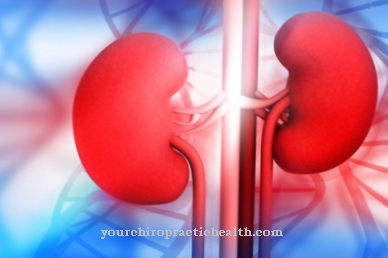The Yawn describes the phenomenon that people who are close to one another can become infected with their yawns. If one yawns, the other yawns too. According to the current state of research, yawning is understood as an expression of sympathy.
What is the yawning?

With some people it can be observed that they start to yawn along with another person in response to the triggering stimulus. Yawning can be observed particularly often in people who are close to one another or at least know one another well.
Yawning is not a sign of lack of oxygen, as has long been suspected, but it is related to fatigue and can occur when boredom. The exact causes of yawning are still largely unknown, but it is clear that yawning can infect other people.
It is very likely that yawning is a sign of empathy and is subconsciously perceived by other people. Empathetic people also yawn when they don't know their yawning counterpart well. The yawning does not have the same function for humans as the initial yawn, but rather serves as a subconscious signal of sympathy to a fellow human being.
Function & task
The yawning itself can perform a number of functions. Some psychological schools assume that it has a function in processing negative emotions. Other theories assume that yawning is a method for thermoregulating the body.
Yawning very likely fulfills the same functions, but there is also the group dynamic component. Probably yawning along shows your fellow human beings subconsciously sympathy. Studies have already shown that particularly empathetic people yawn even when someone they don't know yawns. On the other hand, yawning was not observed at all with disorders of the ability to empathize, for example with psychopathy or with other comparable personality disorders.
Of course, a person does not find his counterpart sympathetic just by yawning, nor is the effect of yawning consciously perceived.
It is about subconscious communication and occurs in a similar form in the animal kingdom with species that tend to behave in groups. This suggests that people and animals also use yawning to build social structures.
In addition, it was observed, especially in primate societies, that showing the teeth while yawning or yawning seems to play an important role in the social cohesion of individuals. Yawning in this form is a reaction to the sight of another primate's teeth. There does not seem to be a single cause for yawning, similar to the yawning of a fellow human being. However, it seems to be an evolutionary holdover from the time when humans also hunted in small groups and relied on social cohesion in their community, which had to be constantly reinforced.
Illnesses & ailments
Yawning is often understood in Western culture as an expression of boredom, tiredness and disinterest. The fact that yawning is probably the exact opposite of this has not yet established itself in social perception, which is why yawning and yawning are equally concealed or completely suppressed.
Together with other subconscious signals of sympathy that are absent, the lack of co-yawning can also lead to the subconscious impression of a lack of sympathy. The human brain pays attention to the finest signals in body language to indicate whether there is sympathy or not.
A lack of yawning was observed in the presence of mental illnesses such as psychopathy and other so-called "dark" personality traits. Such diseases switch off the person's feeling of empathy and thus do not allow them to feel and express real sympathy for their fellow human beings.
No matter how familiar a person might be, the person concerned would not yawn with such illnesses. Similar observations were made in autistic children, who also do not yawn when videos of yawning people are played to them. With them, the reason is also that they do not have the same feeling of empathy and therefore do not send out signals like yawning.
Very frequent apparent yawning should be carefully observed in conjunction with other symptoms. In rare cases, multiple yawns are a symptom of diseases such as multiple sclerosis, radiation sickness, migraines (very rare) or occur during drug withdrawal. Even if it just seems like harmless yawning, it can, along with other more specific symptoms, indicate a health problem.
The use of some medications can also increase yawning or yawning, including active ingredients such as serotonin reuptake inhibitors, lidocaine or benzodiazepines. Overall, however, yawning is rarely a symptom with disease value and should rather be understood as a harmless, subconscious signal and evolutionary remnant.













.jpg)

.jpg)
.jpg)











.jpg)